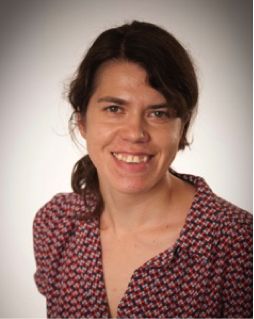Nuclear Magnetic Resonance
Meet the team
For general enquiries about the NMR Facility, please e-mail A.Kalverda@leeds.ac.uk. The NMR facility is located in LC Miall 4.21 which is the level 4 extension between the LC Miall building and the Worsley building.
Dr Arnout Kalverda, NMR Facility Manager

As NMR facility manager I am the first point of contact for new users of the facility and can give advice and guidance on any aspects of an NMR project. I am also responsible for the development and implementation of new NMR methods that can further enhance the already excellent capabilities of our equipment. Currently we are focussing on direct Carbon- and Nitrogen-detection as a complementary method to proton-detected experiments. Major projects involve the characterisation of partially folded and intrinsically disordered regions in proteins, the study of chemically exchanging systems and the role of dynamics in protein-ligand interactions.
Prof Alexander Breeze, Director of NMR Spectroscopy

As director of NMR at the Astbury BioStructure Laboratory, my role is to provide academic oversight and strategic leadership of this superb Facility. I can offer advice on how to integrate state-of-the-art bioNMR with other techniques to tackle fundamental mechanistic questions in biology and biomedicine. In my laboratory we are specifically interested in how the function of proteins and other biological molecules is altered in diseases including cancer and how these changes can be exploited to design new therapies. Current examples include projects on activating mutations in fibroblast growth factor receptors and other signalling complexes that drive tumour growth.
Dr Anastasia Zhuravleva, Lecturer in Biological NMR

In my lab we employ protein NMR to characterize large and complex biological systems, such as multi-domain chaperones and stress-induced signalling pathways. Particularly, we are interested in how small local perturbations, e.g., somatic cancer mutations and post-translational modifications, affect protein activity and dynamic communication between different components of protein-protein networks. My lab can offer advice on how to label challenging protein systems for NMR and choose the most appropriate labelling strategy as well as how to perform structural (RDC, PRE) and dynamic (CPMG) characterization of large macromolecules using traditional and fast-acquisition methods.
Dr Jennifer Tomlinson, Royal Society Dorothy Hodgkin Research Fellow

My research is focused on the use of structural biology such as NMR spectroscopy and biophysical techniques to study protein structure and dynamics. I seek to understand the detailed molecular mechanisms of resistance to important clinical antibiotics, particularly those involving allosteric effects and protein dynamics.
Dr. Theo Karamanos, University Academic Fellow

We are interested in understanding the mechanistic details between protein folding and misfolding and how this balance is related to protein function/misfunction. We use NMR spectroscopy to visualize transiently populated states, including folding intermediates and weakly bound complexes, in combination with mathematical modelling of time-dependent processes to gain insights into both the thermodynamics and kinetics of the reaction. We are particularly interested in the integration of sparse structural NMR data with data from electron microscopy/mass-spectrometry/EPR spectroscopy and the development of computational approaches that can investigate the structure and dynamics of molecules ranging from small peptides to large macromolecular assemblies.

